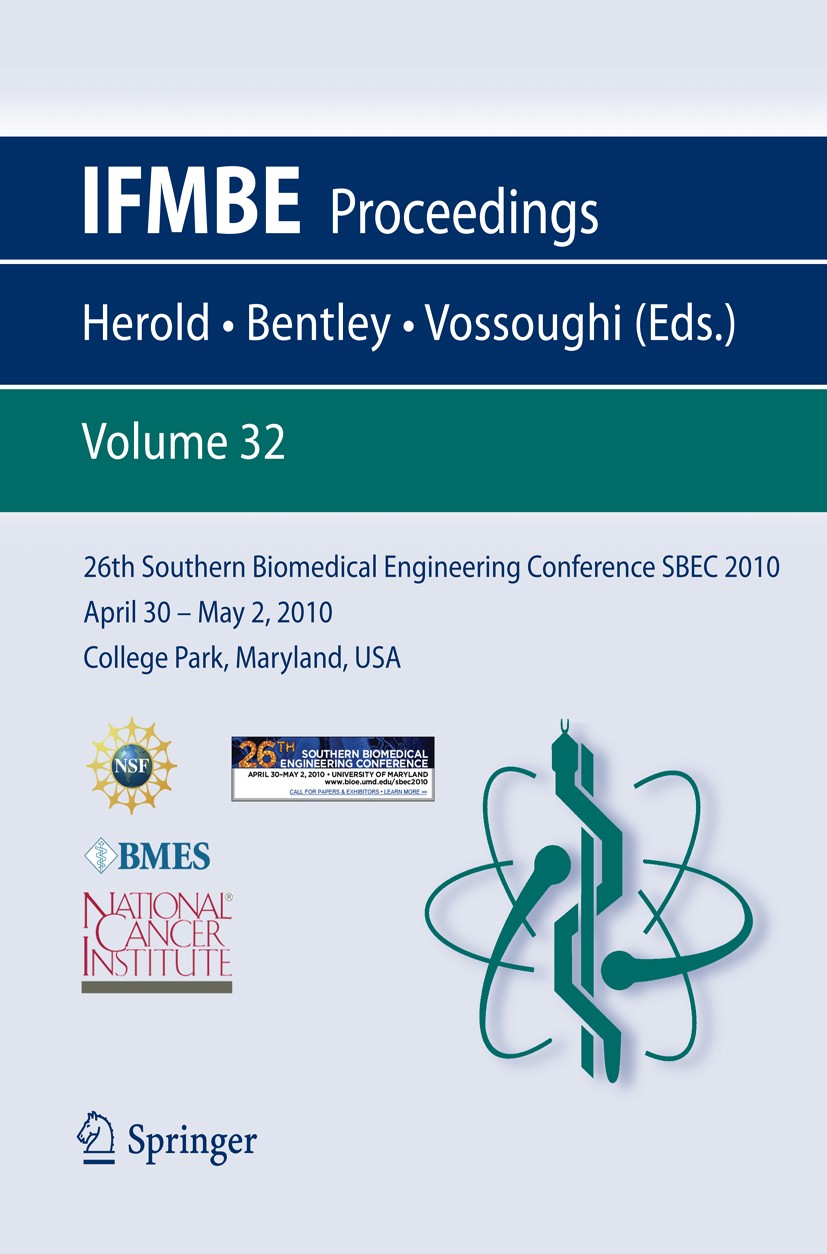| 期刊全称 | 26th Southern Biomedical Engineering ConferenceSBEC 2010 April 30 - May 2, 2010 College Park, Maryla | | 影响因子2023 | Keith E. Herold,Jafar Vossoughi,William E. Bentley | | 视频video | http://file.papertrans.cn/101/100580/100580.mp4 | | 发行地址 | Presents the Proceedings of the 26th Southern Biomedical Engineering Conference, College Park, MD, USA All research papers are double peer reviewed | | 学科分类 | IFMBE Proceedings | | 图书封面 |  | | 影响因子 | The 26th Southern Biomedical Engineering Conference was hosted by the Fischell Department of Bioengineering and the A. James Clark School of Engineering from April 30 – May 2 2010.. The conference program consisted of 168 oral presentations and 21 poster presentations with approximately 250 registered participants of which about half were students. The sessions were designed along topical lines with student papers mixed in randomly with more senior investigators. There was a Student Competition resulting in several Best Paper and Honorable Mention awards. There were 32 technical sessions occurring in 6-7 parallel sessions. This Proceedings is a subset of the papers submitted to the conference. It includes 147 papers organized in topical areas. Many thanks go out to the paper reviewers who significantly improved the clarity of the submitted papers. | | Pindex | Conference proceedings 2010 |
The information of publication is updating

书目名称26th Southern Biomedical Engineering ConferenceSBEC 2010 April 30 - May 2, 2010 College Park, Maryla影响因子(影响力)

书目名称26th Southern Biomedical Engineering ConferenceSBEC 2010 April 30 - May 2, 2010 College Park, Maryla影响因子(影响力)学科排名

书目名称26th Southern Biomedical Engineering ConferenceSBEC 2010 April 30 - May 2, 2010 College Park, Maryla网络公开度

书目名称26th Southern Biomedical Engineering ConferenceSBEC 2010 April 30 - May 2, 2010 College Park, Maryla网络公开度学科排名

书目名称26th Southern Biomedical Engineering ConferenceSBEC 2010 April 30 - May 2, 2010 College Park, Maryla被引频次

书目名称26th Southern Biomedical Engineering ConferenceSBEC 2010 April 30 - May 2, 2010 College Park, Maryla被引频次学科排名

书目名称26th Southern Biomedical Engineering ConferenceSBEC 2010 April 30 - May 2, 2010 College Park, Maryla年度引用

书目名称26th Southern Biomedical Engineering ConferenceSBEC 2010 April 30 - May 2, 2010 College Park, Maryla年度引用学科排名

书目名称26th Southern Biomedical Engineering ConferenceSBEC 2010 April 30 - May 2, 2010 College Park, Maryla读者反馈

书目名称26th Southern Biomedical Engineering ConferenceSBEC 2010 April 30 - May 2, 2010 College Park, Maryla读者反馈学科排名

|
|
|
 |Archiver|手机版|小黑屋|
派博传思国际
( 京公网安备110108008328)
GMT+8, 2025-11-12 05:56
|Archiver|手机版|小黑屋|
派博传思国际
( 京公网安备110108008328)
GMT+8, 2025-11-12 05:56


